Military equipment from the pen: aviation
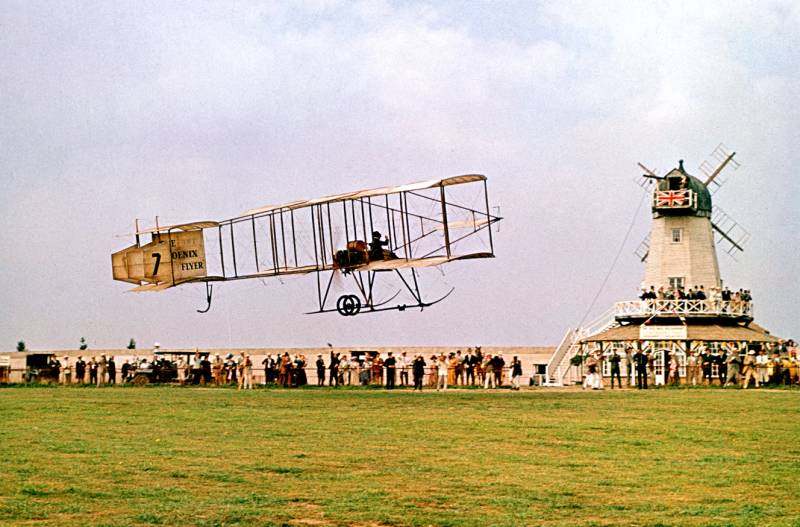
Frame from the movie "Air Adventures" (1965). Alas, none of the novelists at the beginning of the XNUMXth century described anything like such aircraft in their novels. Apparently, they simply did not make any impression on them ...
happy thought. It veered to the side and crashed into the edge of the right wing.
The aeropile was thrown back, and its nose slid over the smooth surface of the airplane's wing.
Graham felt the huge machine speeding along, pulling the aeropile along. But I did not immediately understand what had happened.
Then he heard a thousand-voiced cry and saw that his car was teetering on the edge
huge wing of an airplane and slides down. Glancing over his shoulder, he saw that the
airplane and the opposite wing rise up.
Rows of seats flashed before him, frightened faces, hands convulsively clinging to cables.
Valves were open in the wing - obviously, the aeronaut was trying to level the car.
The second airplane took off steeply to avoid the air whirlpool.
from the fall of a giant machine. Broad wings flew up.
Graham felt the aeropile free itself, and the monstrous structure
turned over in the air, hung over him like a wall.
H. G. Wells "When the Sleeper Wakes"
stories about weapons. In the past material about weapons, which came out from the pen of science fiction writers, it was about land vehicles and huge battleships invented by them. Today we will talk about air means of warfare, which came out from the pen of science fiction writers. Well, perhaps we will need to start with the novel “When the Sleeper Wakes” by H. G. Wells, which deals with events separated from us by two centuries.
Perhaps, in addition to everything else, this is also one of the first novels “about hitmen”, only now his hero Graham gets into the future in a completely natural way - falling into a lethargic sleep, after waking up from which he finds himself in a world completely alien to him, still filled with injustice and operation. And that's where the revolution begins, in which Graham participates and ... He fights in the air with an armada of airplanes that are being taken to London by blacks to suppress the uprising.

Cover of the novel When the Sleeper Wakes. New York, 1899 First American edition. Illustrations by H. Lanos
Two types of aircraft operate in the novel: huge transport airplanes and relatively small, usually two-seater, aeropiles, the design of which is described in sufficient detail. Aeropil has a cabin with glazing and a movable motor with a propeller located, apparently, behind the cabin. The control is carried out by shifting the motor, that is, by changing the center of gravity of the apparatus, in addition, it has valves on the wing that can be opened and closed.
Aeropiles are described as fairly durable machines that take off on special rails. In any case, in the novel, Graham rams down first an aeropile, and then two more enemy aircraft, before his own apparatus fails and crashes on impact with the ground.
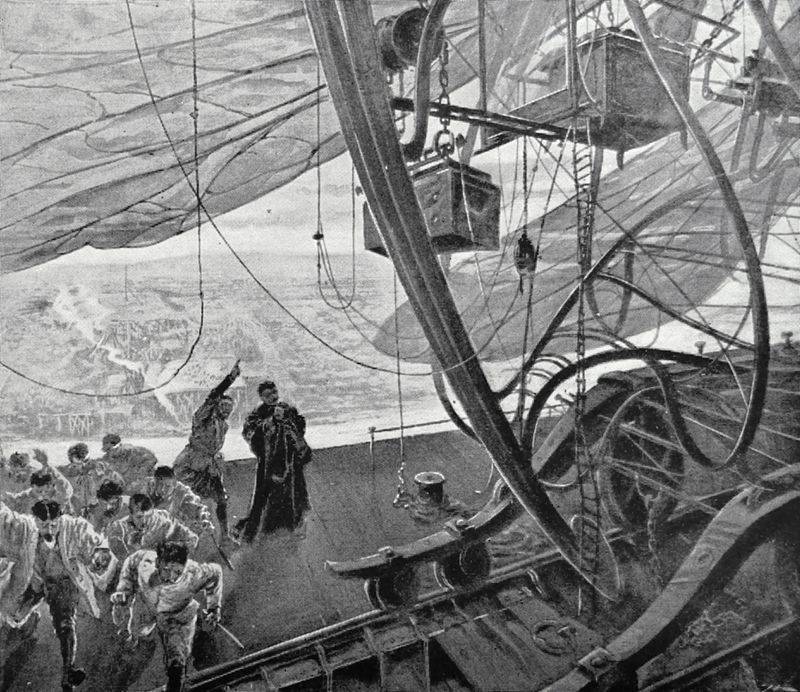
Graham gets into the aeropile. Illustration by H. Lanos from the novel When the Sleeper Wakes, 1899
Interestingly, the novel was published in our country in two translations. In an earlier one, both of these names are found: "airplane" and "aeropil". But in a later version, the word "aeropil" for some reason was replaced by "monoplane".
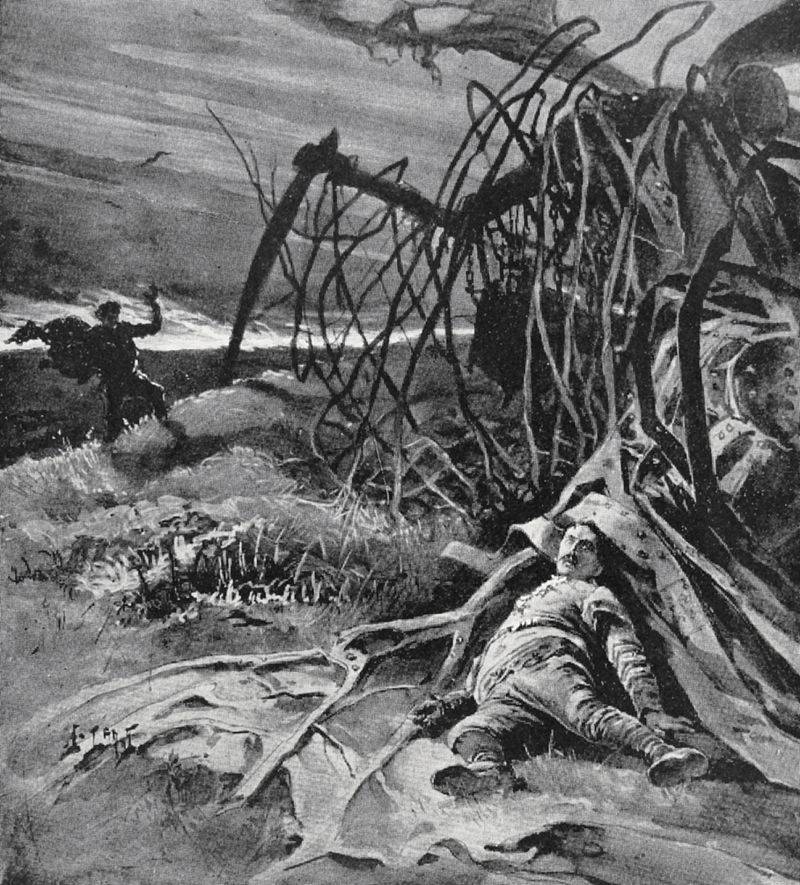
Death of Graham. Illustration by H. Lanos from the novel When the Sleeper Wakes, 1899
It would seem that after this, Wells would have to write his fantastic novels about the struggle in the air, focusing exclusively on devices heavier than air. But no, his next novel, War in the Air, written by him in 1907 and published in 1908, is devoted mainly to airships.
Although airplanes also appear in it. The novel is very interesting for its predictions, in particular, of the coming world war and the role of city bombing in this war.
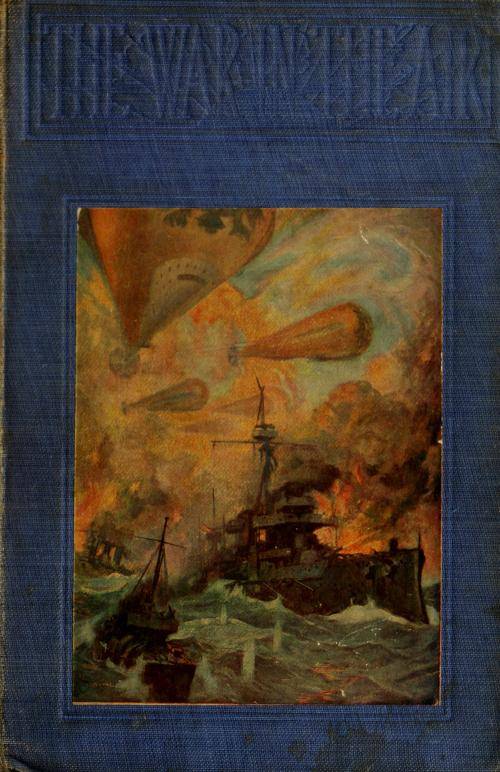
Cover of H. G. Wells' novel "War in the Air". First edition. 1908
But the most interesting thing is the airships he described. Indeed, at the time when he wrote his novel, Zeppelin-type airships already existed and were flying. They were written about, their images were placed in magazines.
But Wells came up with his "zeppelin" by placing its armament - a rapid-fire cannon - in the nose. They bomb the enemy, in particular the ships of the American fleet, they are also very original - with the help of gliders that are launched from the airship.
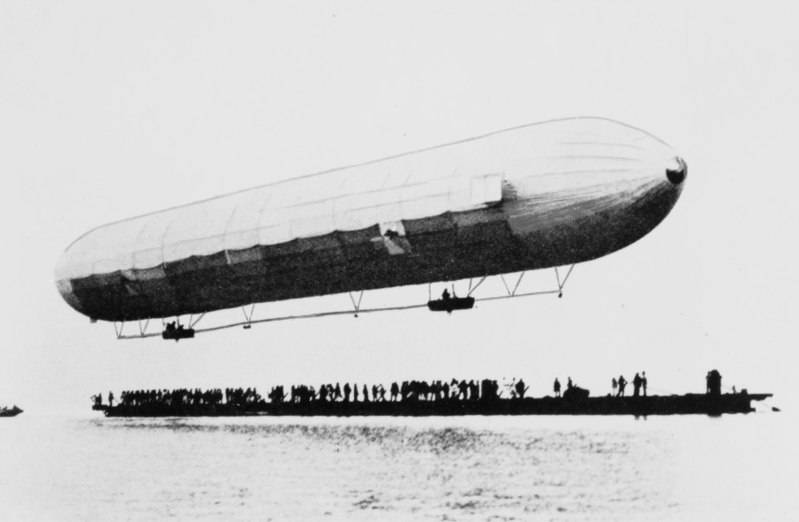
The first flight of a Zeppelin airship on Lake Constance, July 1900. Photo courtesy of the US Library of Congress
So it’s not for nothing that today we are talking about a new means of warfare: an ultra-high-altitude airship with a large carrying capacity, from which they will launch Drones and be observed hundreds of kilometers deep into enemy territory, and he himself will be so high and far away that no anti-aircraft missile will reach him!
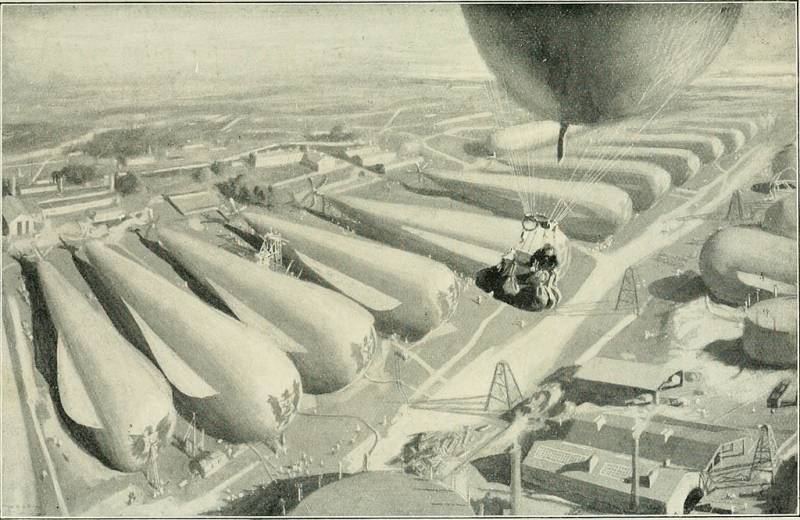
German airships. Illustration from War in the Air, H. G. Wells, 1908
Interestingly, to combat the hydrogen-filled airships in Wells' novel, guns firing an "oxygen cartridge" are used. Obviously, of course, not a cartridge, but a bullet. Moreover, Wells did not describe its device, although he showed a very strong igniting effect.
Hypothetically speaking, such bullets should have been fired from a 12-gauge gun, and they themselves could be a fairly thin shell of magnesium, filled with oxygen under pressure, and an igniter under a wrinkling cap made from a mixture of Bertolet salt and red phosphorus.
It was only necessary to crush it, so this mixture immediately ignited, and since there was pure oxygen around, the magnesium shell immediately ignited, as a result of which, in the place where such a bullet hit, a high temperature occurred, capable of setting fire to everything in the world.
In the novel "The Extraordinary Adventures of the Barsac Expedition", first published as a separate edition in 1919, the first 5 chapters were written by the Frenchman Jules Verne himself in 1905, and the rest by his son Michel Verne 9 years later, in 1913.
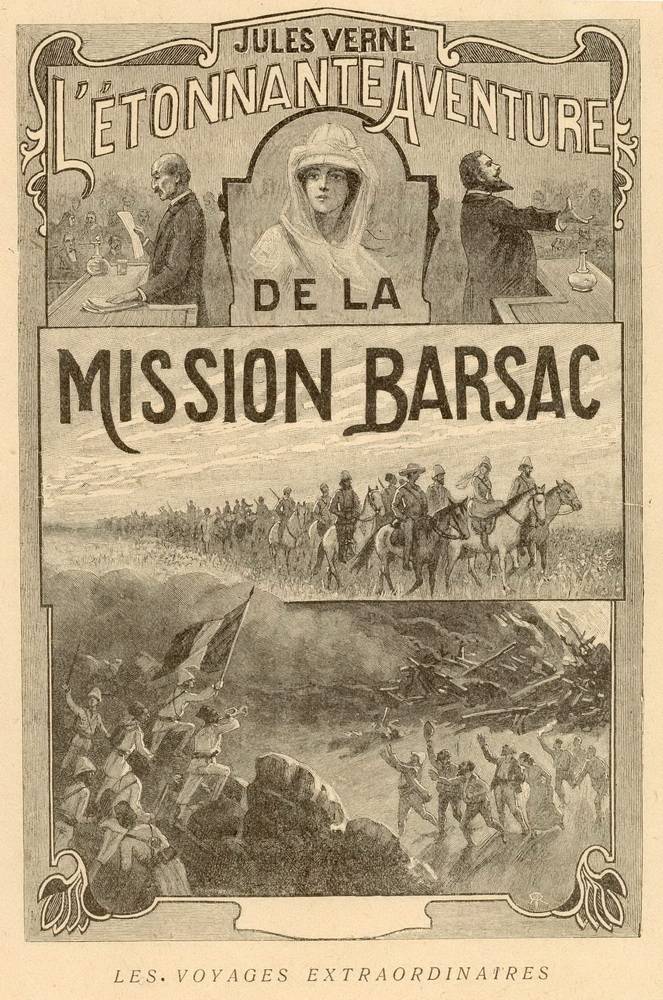
Title page of the first French edition of the novel The Extraordinary Adventures of the Barsac Expedition. Artist Georges Roux
And there are just no flying cars there. There are also high-speed airplanes, much faster than the devices of the early twentieth century, certainly familiar to Monsieur Verne, and even more so to his son. There are also remotely controlled helicopters - "gyrocopters", in a word, there are all sorts of notions "above the roof."
The novel was published in the USSR in 1939 in eight issues of the Pioneer magazine, but it is clear that in a greatly abridged version. Then it was published in 1955, and until 1960 it went through five editions, one in Ukrainian, but then it was not republished until 1983.
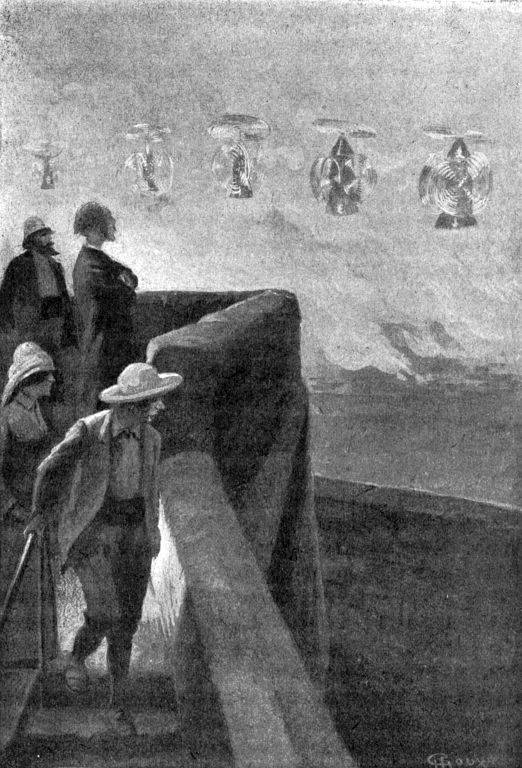
The real quadrocopters, although it would be more correct to call them “pentocopters”, since, as we can see, Vernov’s devices have five propellers: one is responsible for lifting the device and holding it in the air, and four others are steering, allow you to instantly change the direction of flight. Illustration from the novel "The Extraordinary Adventures of the Barsak Expedition". Artist Georges Roux
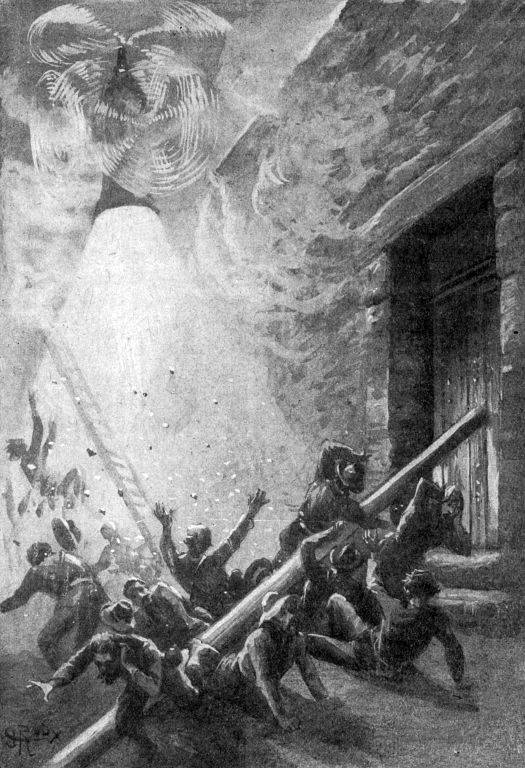
And so in the novel, with the help of "pentocopters", there is a fight against villains from among the "merry guys". Illustration from the novel "The Extraordinary Adventures of the Barsak Expedition". Artist Georges Roux
Extremely interesting in terms of "weapons from the pen" Alexander Belyaev's novel "Struggle on the Air".
It was first printed in 1927 under the title "Radiopolis" in Life and Communication Technology #1–9. This is one of the few creations of Soviet fiction, which describes the war of the future between the US and the USSR.
Reprints of the novel followed only after 1986, and in terms of the number of prophecies that came true, this novel can be considered a real "catalog of scientific and science fiction ideas." By the way, this is also a novel about "fallen". True, his hero is transported into the future in delirium, but nonetheless.

Cover of the novel Fighting on the Air, first edition, 1928
Again, what only in this novel is not. And the Americans, degenerated to the state of Morlocks and Eloi, both poor and rich, although the Soviet communists, deprived of hair and teeth in it, are also little better!
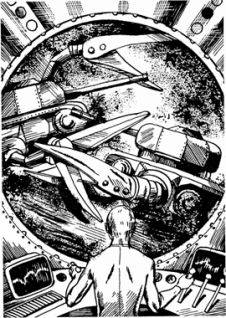
Tanks in the novel, they are armed not only with cannons, but also with robbed claws, with which they grab and bite each other in half! Illustration from the novel "Struggle on Air" by A. Belyaev
But, of course, the main thing in it is all kinds of aircraft and even a spaceship, on which the remnants of the defeated American rich are trying to escape from Earth into space.
Later, Belyaev would develop this theme in the novel Leap into Nothing, but it began precisely in The Struggle on the Air. By the way, this novel also talks about "stratospheric bombing missiles" or "projectiles without guns" controlled by radio.
Finally, we turn again to Alexander Kazantsev's novel The Burning Island. Indeed, in it, he invented not only a land battleship, but also an atomic paroplane, in which steam from a nuclear reactor rotates a turbine, which in turn rotates a generator, which generates a current that feeds traction motors. Kazantsev describes it this way:
Moreover, it is interesting that attempts to build nuclear-powered aircraft were made both in the USA and in the USSR, but ... ended in nothing. Experienced aircraft were laid up. The accident of such an aircraft would be very dangerous!
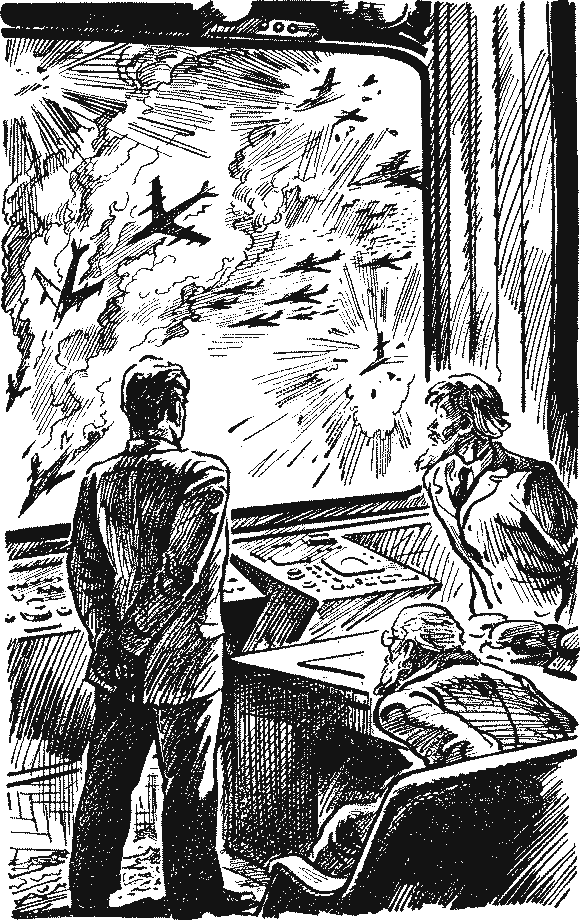
Radio fighters attack Welt's planes. Illustration from the novel "The Burning Island"
But on the other hand, the radio fighters invented by him, which the Heroes of the Soviet Union control from the ground, have found their embodiment in modern strike drones, from which to unmanned fighters, in fact, just one step!
Information